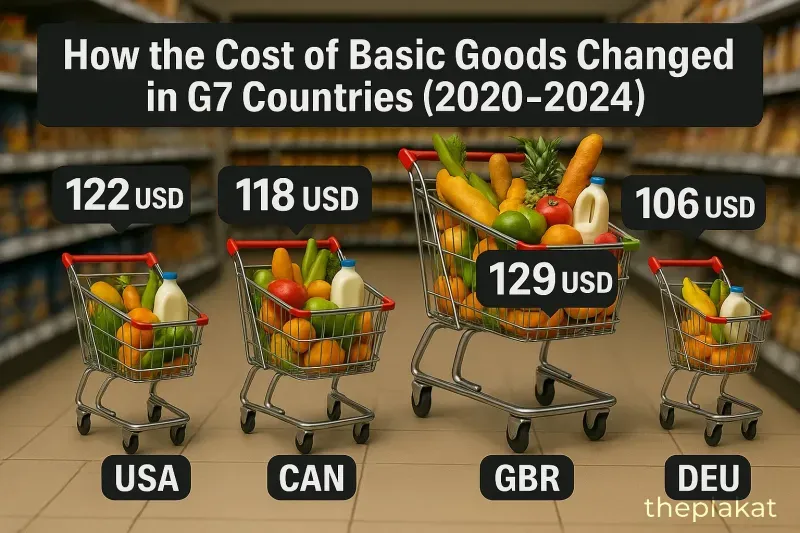Published
in Economy
The cost of the basic consumer basket in G7 countries experienced notable changes between 2020 and 2024. Using the US dollar as a benchmark, this article explores which economies became more expensive and which became more affordable.
The basic consumer basket represents a set of goods and services deemed essential for daily living, including food, clothing, housing, transportation, and healthcare. This basket varies slightly from country to country but typically reflects subsistence-level consumption. It's used to monitor inflation and compare cost of living across nations.
From 2020 to 2024, all G7 countries experienced rising costs of the basic consumer basket in US dollar terms, largely due to inflation and currency volatility. The US saw an increase from $100 to $122, while Canada moved from $99 to $118. The UK experienced the sharpest growth, reaching $129 in 2024. Meanwhile, Japan was the only country where the cost fell in dollar terms—from $81 to $67—largely due to a weakening yen.
In 2020, the basket's cost was similar in the US, Canada, and the UK (~$100), while it was significantly lower in Japan ($81) and Italy ($85). By 2024, inflation had increased the costs significantly in the UK (+29%), the US (+22%), and Canada (+19%). Germany, France, and Italy had more moderate increases, while Japan’s basket value dropped to $67, reflecting not deflation but currency depreciation.
The most striking pattern is the UK’s steep price increase, outpacing even the inflation-heavy US. On the other hand, Japan’s falling cost of the basket is an outlier, raising questions about its monetary and currency policy. Germany and France maintained relatively stable costs, thanks to stronger price controls and lower inflation volatility.
While this article focuses on G7 countries, the rest of the world shows mixed trends. In emerging markets, consumer basket costs often increased more sharply but remain lower in dollar terms due to currency devaluation. Nations like India or Brazil saw over 25% inflation across these years, but dollar-denominated basket values remained below $60—highlighting vast inequality in purchasing power.

A basic consumer basket is a standardized set of essential goods and services used to track cost of living and inflation across time and between countries.
Although local prices rose slightly, the Japanese yen weakened significantly against the US dollar, causing the dollar-denominated value of the basket to fall.
The United Kingdom, where the basket cost rose to $129 due to high inflation and a relatively strong pound.